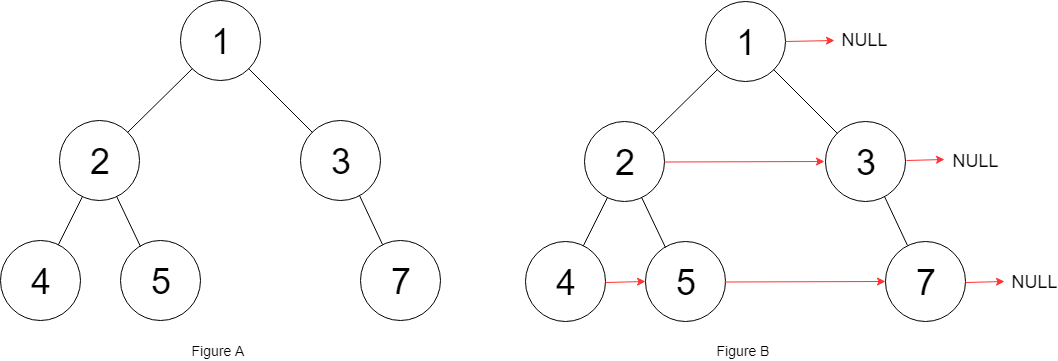動機
用已經建成的next去連,所以遞迴方式變得很有趣
Problem
Given a binary tree
struct Node { int val; Node *left; Node *right; Node *next;}Populate each next pointer to point to its next right node. If there is no next right node, the next pointer should be set to NULL.
Initially, all next pointers are set to NULL.
Follow up:
- You may only use constant extra space.
- Recursive approach is fine, you may assume implicit stack space does not count as extra space for this problem.
Example 1:

Input: root = [1,2,3,4,5,null,7]Output: [1,#,2,3,#,4,5,7,#]Explanation: Given the above binary tree (Figure A), your function should populate each next pointer to point to its next right node, just like in Figure B. The serialized output is in level order as connected by the next pointers, with '#' signifying the end of each level.
Constraints:
- The number of nodes in the given tree is less than
6000. -100 <= node.val <= 100
Sol
剛到這個root就先看左右node能不能連,之後要先遞迴右邊,因為終點在右邊,所以右邊的next要先建好
之後就是看現在的next能不能建,如果需要另一邊的node就透過next去找
def getrightNext(r):
if r:
if r.left:
#print("left", r.left.val)
return r.left
elif r.right:
#print("right", r.right.val)
return r.right
else:
#print("next", r.next.val if r.next else None)
return getrightNext(r.next)
else:
return None
class Solution:
def connect(self, r: 'Node',p=None) -> 'Node':
if r:
if r.left and r.right:
r.left.next = r.right
if not r.next and p:
#print("at", r.val, p.val)
r.next = getrightNext(p.next)
self.connect(r.right,r)
self.connect(r.left,r)
return r